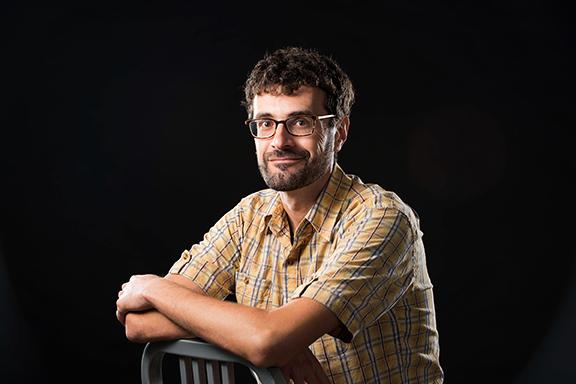
Next AIA Lecture features UNL's Sapirstein
calendar icon31 Mar 2015
Lincoln, Neb.—University of Nebraska–Lincoln Assistant Professor of Art History Philip Sapirstein will present the final Archaeological Institute of America (AIA) lecture of the 2014-2015 season on Monday, April 13 at 7:30 p.m. in Love Library Rm. 102 on the UNL city campus.The lecture is free and open to the public.
Sapirstein’s lecture, titled “Doric Architecture and Egypt,” will discuss the origins of Greek monumental architecture, focusing especially on how the form and decoration of the Classical Greek temple, such as the Parthenon, finds their origins in the ancient Near East, in particular Egypt.
The Doric architectural style from ancient Greece is one of the most successful and influential architectural systems in history. Although we can date the earliest remains of Doric monuments to the decades around 600 B.C., today there is little consensus about how the style was developed. After centuries without any tradition of monumental architecture, Greeks appear to have begun constructing enormous stone monuments surrounded by dozens of Doric columns—which supported a standardized entablature with a triglyph-metope frieze, geison, and pediment. In this talk, Sapirstein re-examines the problem of Doric origins as a potential case of cultural transmission. The Doric temple emerged at the end of a period when Greeks were in frequent contact with the Near East, in particular Egypt. I argue that the scholarship on Greek architecture has, up to now, downplayed the many striking similarities between early Doric temples and Egyptian and other Near Eastern monuments. Like contemporary Greek painting, sculpture, and even Ionic architecture, we can view the Doric temple as another example of Greeks creatively adapting and remixing decorative systems and practical techniques that they learned from the cultures of the Eastern Mediterranean.
Sapirstein joined the UNL faculty after postdoctoral research in Israel (Fulbright, NEH), Greece (ACLS), and the University of Pennsylvania. An art historian and archaeologist, his areas of specialization are Greek architecture, and digital documentation and reconstruction. A major focus of his research is the emergence of monumental architecture from the 8th to 5th centuries B.C. at Greek sanctuaries and settlements in the mainland, Italy, and Turkey. He has been involved in fieldwork at many sites in the Mediterranean, including Corinth, Corfu, Didyma, Olympia and Sardis. With a background in studio art, design and computer analysis, another significant aspect of Sapirstein's research is the exploration of advanced digital technologies for the recording, reconstruction and visualization of antiquity. He has published on Greek roofing systems from monumental Archaic temples, the Athenian pottery industry, and methodology. He is principal investigator of two recent digital projects in Greece: the Digital Archaic Heraion Project at Mon Repos, Corfu, and a restudy of the Hera temple at Olympia.
Sapirstein’s lecture is sponsored by the University of Nebraska–Lincoln, the Department of Art and Art History at UNL, and the Lincoln-Omaha Society of the Archaeological Institute of America. The AIA is North America’s oldest and largest archaeological organization.